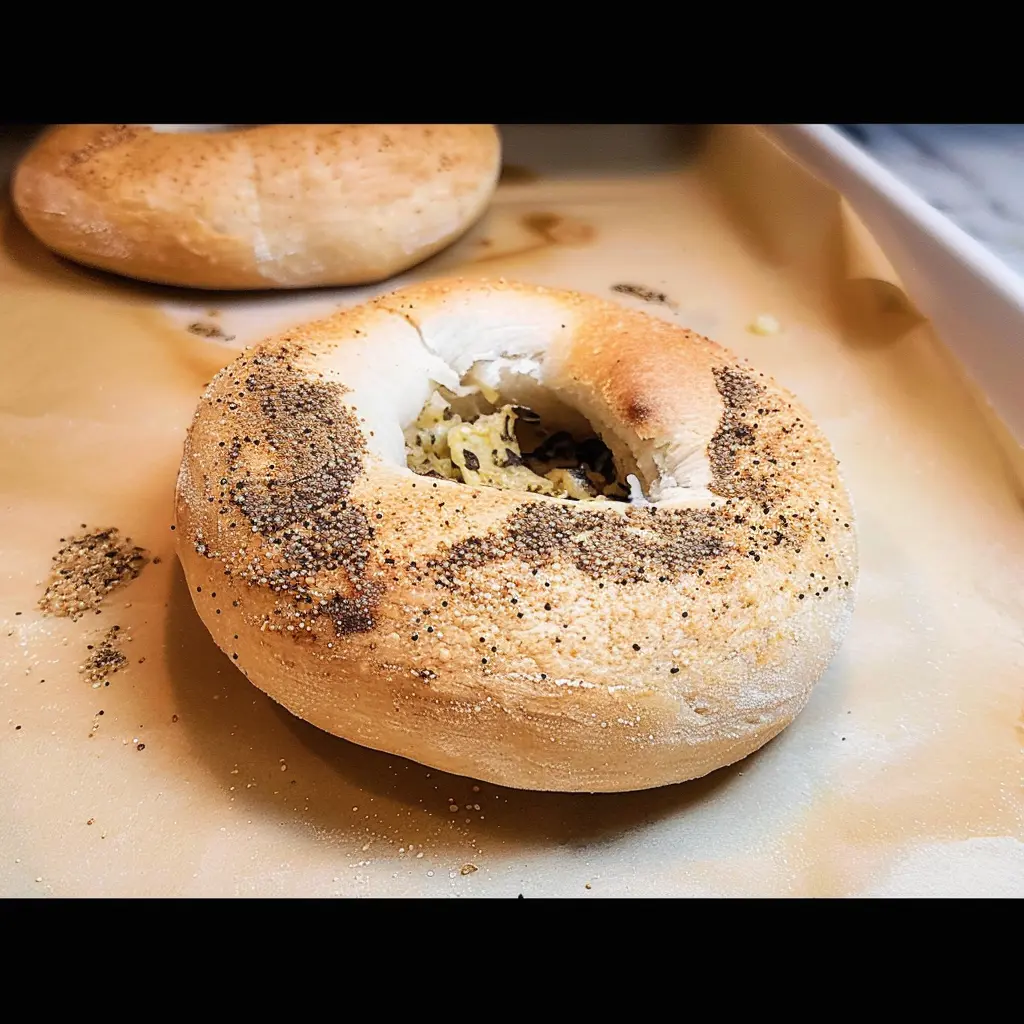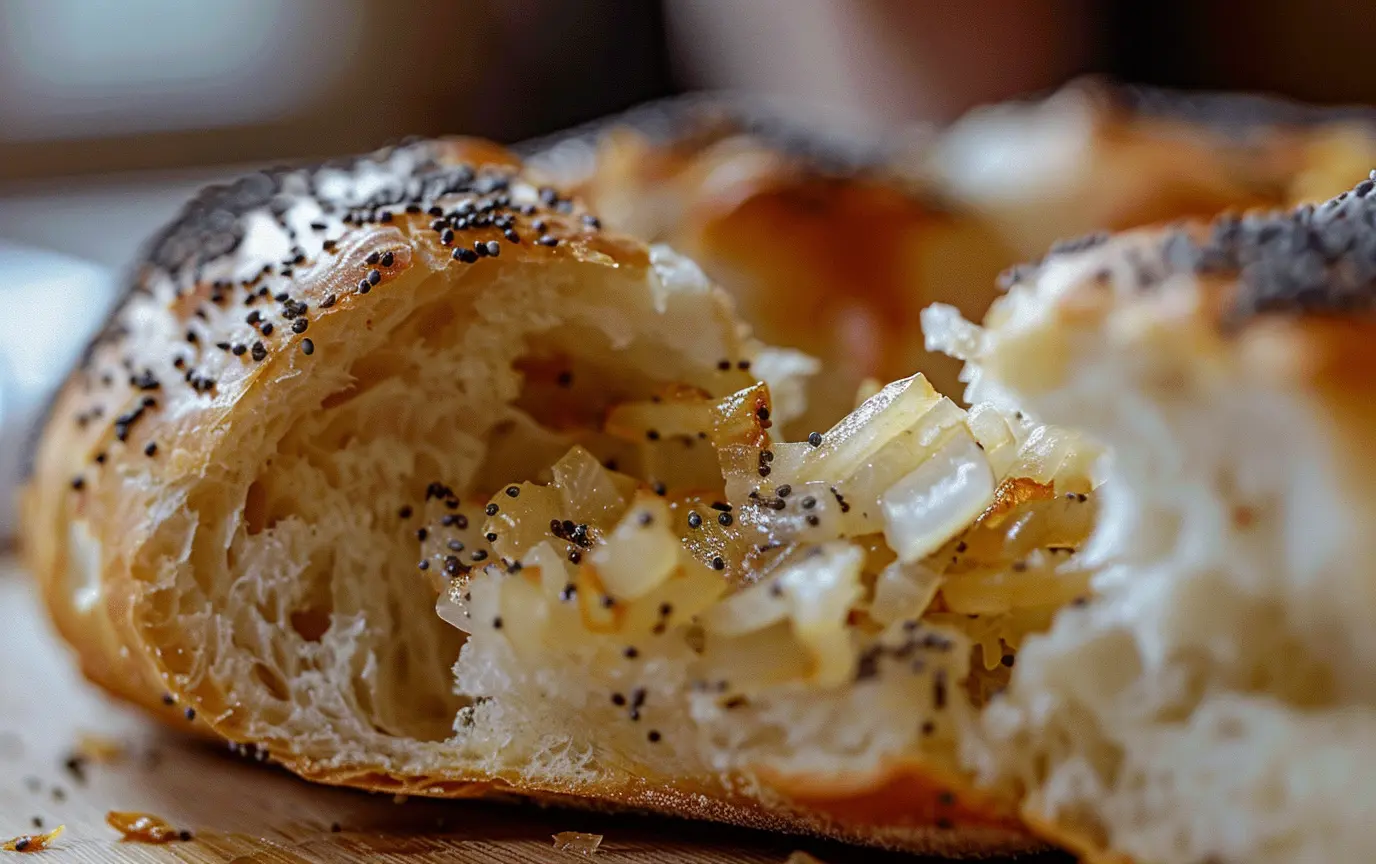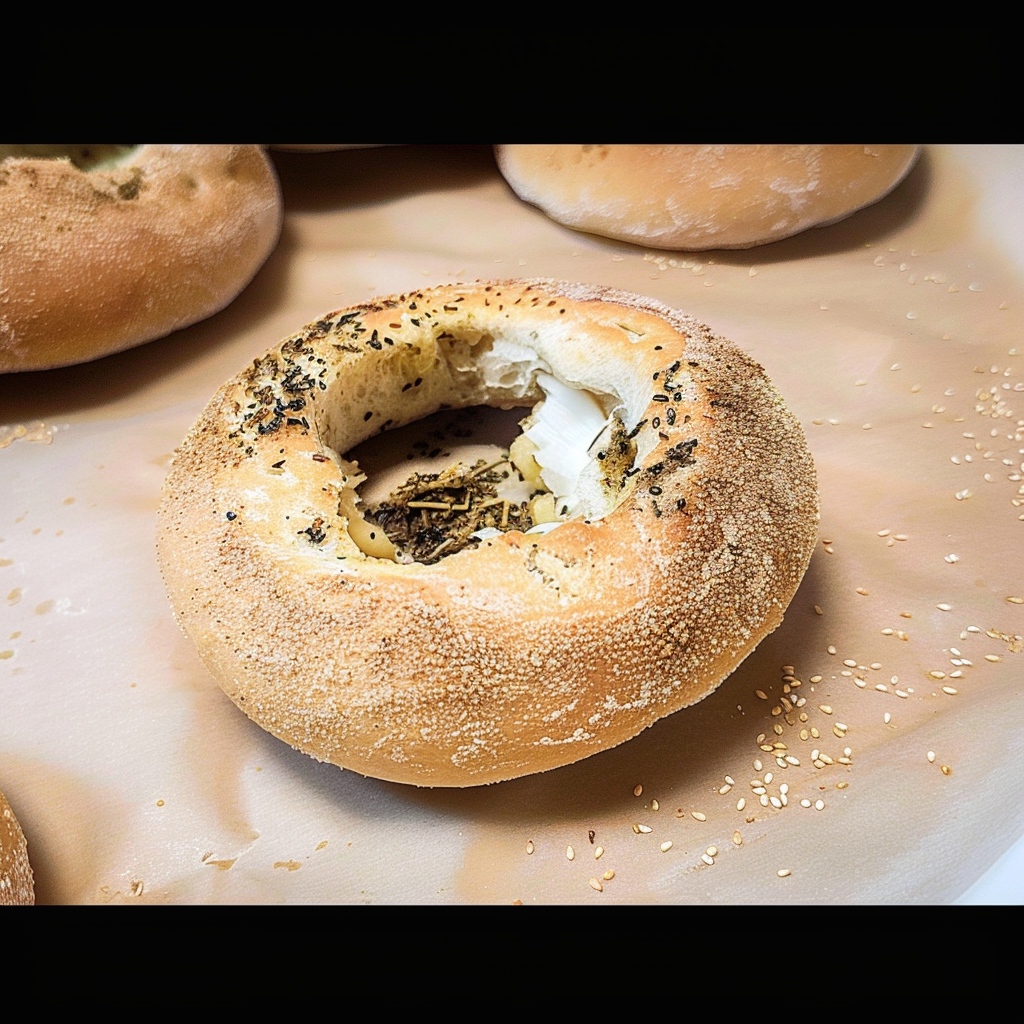Introduction to the Bialy
In this exploration of the bialy, we dive into its history from Białystok, Poland, to its rise in New York’s culinary scene. We’ll uncover traditional methods of making bialys, their cultural importance, and differences from bagels. We’ll also explore modern adaptations and ways to enjoy this tasty Polish onion roll.
What is a Bialy?
Bialys, often found nestled beside bagels in bakeries across New York, have a unique charm that deserves a spotlight. Unlike bagels, bialys are not boiled before baking, giving them a distinct texture that’s both chewy and soft. The center of a bialy is not hollow but indented, traditionally filled with a mixture of onions and poppy seeds, creating a savory heart that is both flavorful and aromatic.
Origin and Basic Characteristics
The bialy or bialystoker kuchen originates from the city of Białystok in Poland. This roll has been a part of Jewish cuisine since the 19th century, brought over to the United States by immigrants who cherished this piece of their heritage. Bialys were a daily staple in Polish Jewish communities, showcasing a simple yet satisfying taste that has stood the test of time.
Bialys might look similar to bagels at first glance, but their preparation and texture set them apart. The dough is more akin to bread dough, denser than that used for bagels. Not being boiled gives the bialy a matte crust rather than the glossy finish seen on bagels. This makes them an ideal base for various toppings, though the classic onion and poppy seed combination remains the most popular.
Understanding the distinct nature of bialys helps us appreciate their role as carriers of cultural history. Next, we’ll explore their journey from Europe to America, examining how they remain relevant in modern culinary culture.
The Origin and Cultural Significance of Bialys
From Bialystok to New York: The Journey of Bialys
The migration of the bialy from the quaint streets of Białystok to the bustling avenues of New York is a story of cultural preservation and adaptation. When Jewish immigrants from Poland settled in New York in the early 20th century, they brought with them cherished recipes, including the humble bialy. These early bakers stayed true to traditional methods, creating a niche for this beloved bread in their new homeland.
In New York, bialys became a symbol of Polish-Jewish heritage, savored by communities who found comfort in their familiar taste amidst a changing world. Over the decades, the bialy has been embraced by a broader audience, curious to experience its unique flavor and texture.
Bialys in Modern Cuisine
Today, the bialy is experiencing a revival, driven by a growing interest in artisanal and heritage foods. Modern chefs and bakers are expanding beyond traditional onion fillings, experimenting with garlic, cheese, and various herbs to cater to contemporary tastes while respecting the bialy’s origins.
This culinary evolution has made bialys more accessible and showcased their versatility. Whether enjoyed at a high-end restaurant or a simple family breakfast, bialys provide a delightful alternative to common breads and pastries.
The enduring appeal of the bialy is rooted not just in its taste but in its story—a narrative of migration, adaptation, and revival. As we delve into the nuances of its preparation and consumption, it’s clear that the bialy is more than just food; it’s a testament to the enduring spirit of those who carried their traditions across oceans and generations.
Next, we’ll explore how to make bialys, offering a detailed guide on ingredients and techniques so you can bring this piece of culinary history into your own kitchen.



